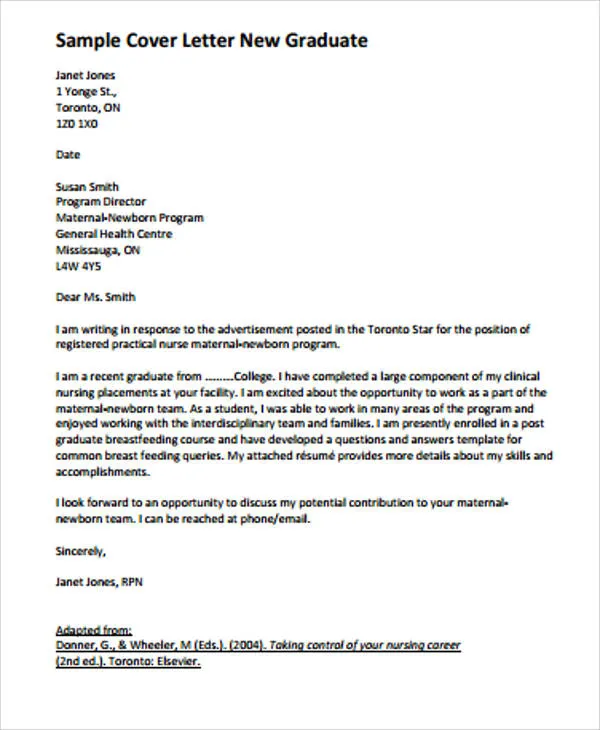What is an RN Cover Letter?
An RN cover letter is a crucial document that accompanies your resume when applying for registered nurse positions. It serves as your introduction to a potential employer, providing an opportunity to showcase your personality, skills, and experiences in a more narrative and personalized manner. Unlike a resume, which presents a factual overview of your qualifications, a cover letter allows you to articulate your career goals, explain why you’re a good fit for the specific role, and express your enthusiasm for the opportunity. A well-crafted cover letter can significantly increase your chances of securing an interview, as it demonstrates your written communication skills, attention to detail, and genuine interest in the position. It should be customized for each job application, highlighting the specific requirements of the role and demonstrating how your qualifications align with the employer’s needs. Failing to include a cover letter can sometimes be interpreted as a lack of interest or a lack of professionalism, so it’s a vital part of any RN job application.
Why is a Cover Letter Important for RNs?
The cover letter plays a vital role in an RN’s job application process for several key reasons. First, it provides context to your resume, allowing you to elaborate on specific skills and experiences that are particularly relevant to the job. For example, while your resume might list your experience in critical care, your cover letter can detail specific accomplishments and the impact you had in those roles. Second, it offers a platform to demonstrate your personality and communication skills. As a nurse, effective communication is essential, and your cover letter is an opportunity to showcase your ability to write clearly, concisely, and persuasively. Third, a cover letter allows you to express your genuine interest in the position and the organization. By referencing the company’s mission, values, or recent achievements, you can show that you’ve done your research and are genuinely excited about the opportunity. Furthermore, the cover letter gives you a chance to address any potential gaps or concerns in your resume, such as a career change or a period of unemployment, by providing a proactive explanation.
Key Components of an Effective RN Cover Letter
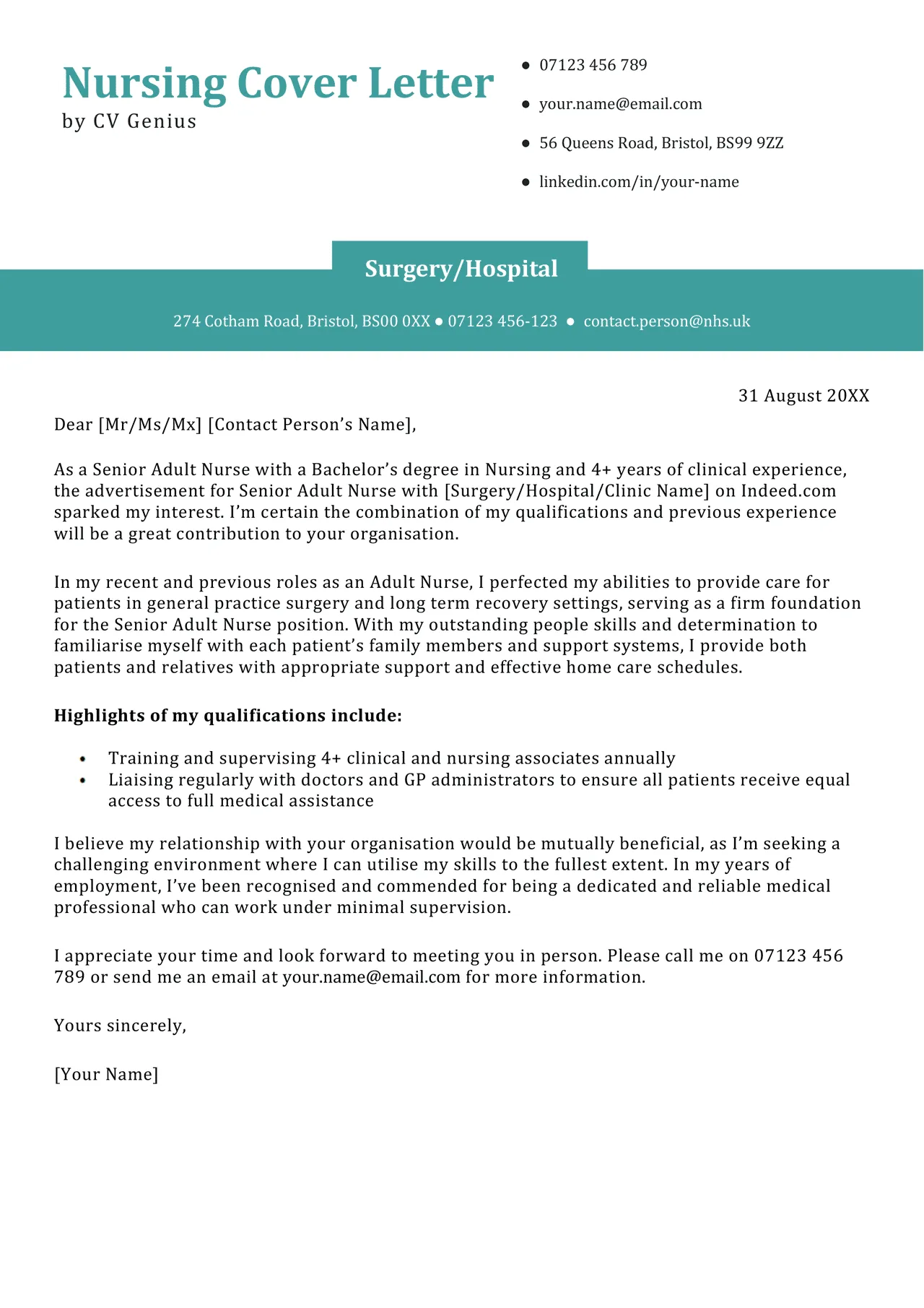
An effective RN cover letter includes several key components that work together to present a compelling case for your candidacy. These include a well-formatted header with your contact information, the date, and the recipient’s details. The opening paragraph should immediately grab the reader’s attention and clearly state the position you’re applying for and how you learned about it. The body of the letter should showcase your relevant skills and experience, highlighting achievements and quantifying them whenever possible. It’s crucial to tailor your cover letter to the specific job description, emphasizing the skills and qualities the employer is seeking. The closing paragraph should express your gratitude for the opportunity and indicate your interest in an interview, including a clear call to action. Finally, the formatting should be professional, with attention to font, spacing, and proofreading to ensure a polished and error-free document.
Header Section Essentials
The header of your RN cover letter sets the tone for the entire document and provides essential contact information. Begin with your full name, professional title (e.g., Registered Nurse), phone number, email address, and LinkedIn profile URL (if applicable). Ensure that your contact information is accurate and up-to-date, as this is how potential employers will reach you. Below your information, include the date. Then, address the hiring manager or the specific person mentioned in the job posting. If you cannot find a specific name, use a professional salutation like “Dear Hiring Manager.” A properly formatted header demonstrates professionalism and attention to detail, making a positive first impression. Make sure the layout is clean and easy to read, with a consistent font and spacing that matches the rest of the letter. Using a professional email address is also very important, as it reflects your professionalism.
Contact Information
Your contact information should be the first thing visible in your cover letter header. Include your full name, professional title (Registered Nurse), phone number, and a professional email address. Avoid using nicknames or informal email addresses. The goal is to make it easy for the employer to contact you directly. Ensure your phone number is active and that you have a professional voicemail greeting. Double-check that your email address is correct to prevent any missed communication. Consider including a link to your LinkedIn profile, which can provide additional context about your professional background and accomplishments, and make it easy for potential employers to learn more about you.
Date
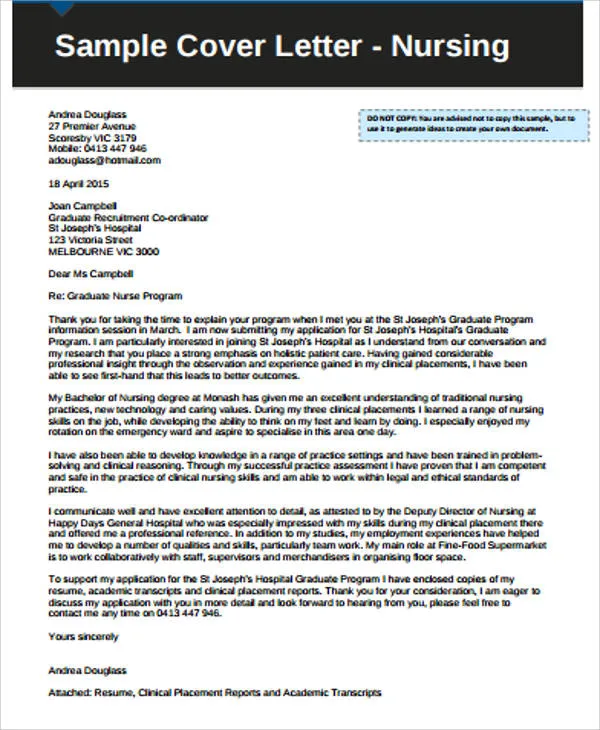
The date is a crucial part of your cover letter header, as it establishes when the letter was written and submitted. Place the date directly below your contact information, typically aligned to the left or right, depending on the overall formatting of your letter. Use the full date format (Month Day, Year) to provide clarity and ensure that there is no confusion. Make sure that the date corresponds to the date you are submitting the application. This simple step is crucial for showing the employer the recency of your application and helps them keep track of when they received your cover letter and resume.
Recipient Information
Directly below the date, include the recipient’s information. This includes the name of the hiring manager (if known), their title, the department or organization, and the complete address. Researching the hiring manager’s name demonstrates that you have taken the time to learn about the position and the organization, which enhances your cover letter’s impact. If the hiring manager’s name is not available, use a professional salutation like “Dear Hiring Manager.” If you are sending it via email, you might address it to the HR department if a specific contact isn’t available. Accuracy is key here, so make sure you double-check all the details, especially the spelling of the hiring manager’s name and the organization’s name and address. This shows your attention to detail and respect for the recipient.
Opening Paragraph Crafting
The opening paragraph of your RN cover letter is your opportunity to make a strong first impression. Start by clearly stating the position you are applying for and how you learned about the opportunity. This could be through a job posting, a referral, or a company website. In the first sentence, aim to grab the reader’s attention. You can briefly mention your key qualifications or a relevant achievement that aligns with the job requirements. This demonstrates your understanding of the role and your enthusiasm. Ensure that the opening is concise, professional, and clearly indicates your intent to apply for the position. The opening should also indicate your interest in the specific organization or role.
Grabbing Attention Immediately
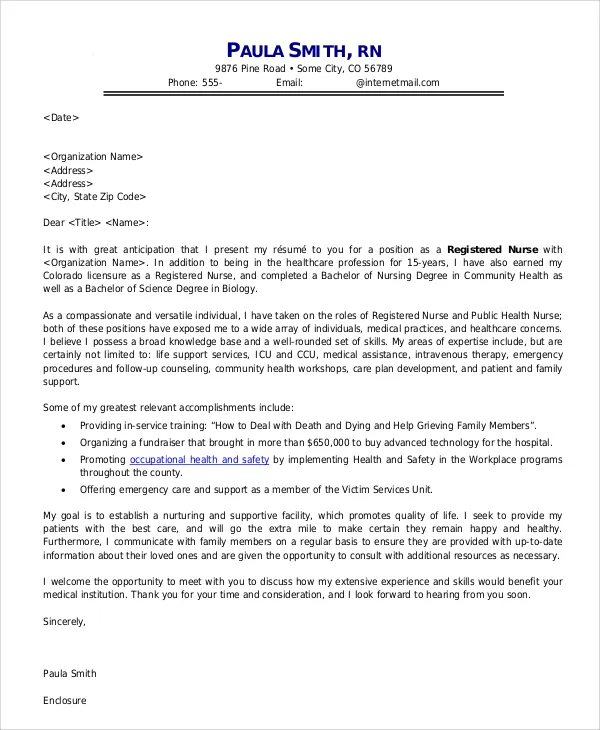
To grab the reader’s attention immediately, consider starting your opening paragraph with a compelling statement or a brief anecdote that highlights your key skills or relevant experience. Instead of a generic opening like “I am writing to apply for the RN position,” try something more impactful, such as “With over five years of experience in critical care, I am eager to bring my expertise in patient advocacy and rapid response to the RN position at [Hospital Name].” Another effective strategy is to mention a specific accomplishment or achievement that is relevant to the job requirements. For example, “During my tenure at [Previous Hospital], I successfully reduced patient readmission rates by 15% through the implementation of a new patient education program.” This immediately demonstrates the value you bring to the table.
Highlighting Your Enthusiasm
Showcasing your enthusiasm for the position and the organization is an important part of the opening paragraph. Expressing genuine interest demonstrates that you are not just applying for any job, but that you have carefully considered the opportunity and are genuinely excited about it. You can do this by mentioning something specific about the organization that attracts you, such as its reputation, its mission, or its values. If you have done some research, mention it, for example, “I am particularly drawn to [Hospital Name]’s commitment to patient-centered care and its innovative approach to healthcare.” You can also express your excitement about the specific role by highlighting how your skills and experience align with the job requirements. By clearly articulating your enthusiasm, you make a memorable impression and motivate the reader to continue reviewing your cover letter and resume.
Body Paragraph Strategies
The body paragraphs are the heart of your RN cover letter, where you showcase your skills, experience, and achievements. Begin each paragraph with a clear topic sentence that introduces the main point you want to convey. Use these paragraphs to provide detailed examples of your qualifications, demonstrating how your skills align with the job description. Be specific and use the STAR method (Situation, Task, Action, Result) to effectively illustrate your accomplishments. For instance, describe a challenging situation you faced, the task you were assigned, the actions you took, and the positive results you achieved. Ensure your paragraphs are concise, well-organized, and easy to read, breaking up lengthy blocks of text. Tailor each body paragraph to the specific requirements outlined in the job description, highlighting the skills and experiences most relevant to the role.
Showcasing Relevant Skills and Experience
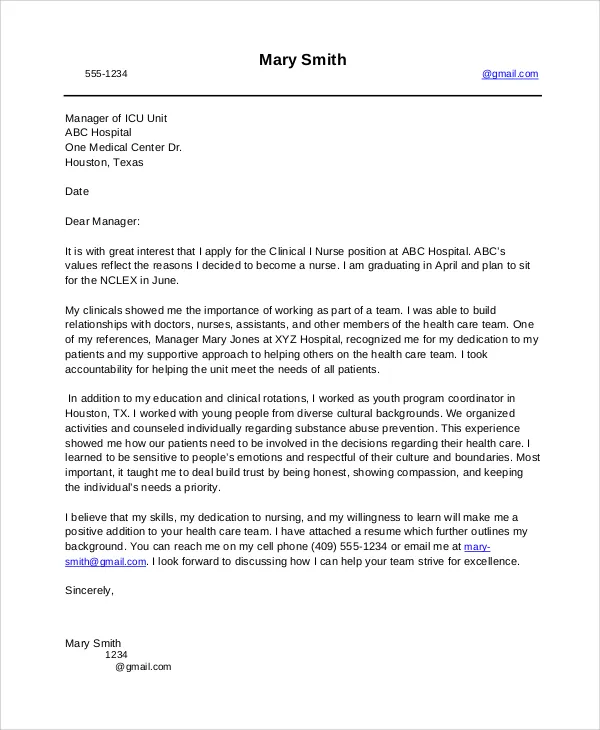
In the body paragraphs, you should showcase your relevant skills and experience. Focus on the skills and qualifications that are directly related to the RN position you are applying for. Refer to the job description to identify the key requirements and tailor your examples to match. Provide specific examples of how you have utilized your skills in previous roles. This might include your experience in patient assessment, medication administration, wound care, or electronic health record systems. Make sure to use keywords from the job description to help the employer quickly recognize your qualifications. Highlight any certifications or specializations that are pertinent to the position. Use action verbs to describe your accomplishments and responsibilities. For example, instead of saying “responsible for patient care,” say “provided comprehensive patient care, including assessment, medication administration, and care planning.”
Quantifying Achievements with Data
Quantifying your achievements with data makes your cover letter more impactful and demonstrates the tangible results you have achieved in previous roles. Use numbers and statistics to provide concrete evidence of your contributions. For example, instead of saying, “Improved patient satisfaction,” say, “Increased patient satisfaction scores by 15% through the implementation of a new communication protocol.” Other examples include the number of patients you have cared for, the percentage reduction in infection rates, or the time you saved by implementing a new workflow. The goal is to provide the employer with clear, measurable proof of your skills and effectiveness. When quantifying achievements, make sure to provide context for the data and explain how you achieved the results. This will help the employer understand your impact and appreciate your abilities.
Tailoring to the Job Description
Tailoring your RN cover letter to the specific job description is essential for demonstrating that you are a good fit for the role. Thoroughly review the job description and identify the key requirements, skills, and qualifications the employer is seeking. Then, structure your cover letter to address these specific needs. Highlight the experiences and skills most relevant to the position, using the same keywords and phrases found in the job description. Provide specific examples of how you have demonstrated those skills in your previous roles, and use the STAR method to illustrate your accomplishments. If the job description emphasizes a particular area of nursing, such as critical care or geriatrics, make sure to highlight your experience in that area. By tailoring your letter to the job description, you show the hiring manager that you have taken the time to understand the role and are confident that you possess the necessary qualifications to excel.
Closing Paragraph Techniques
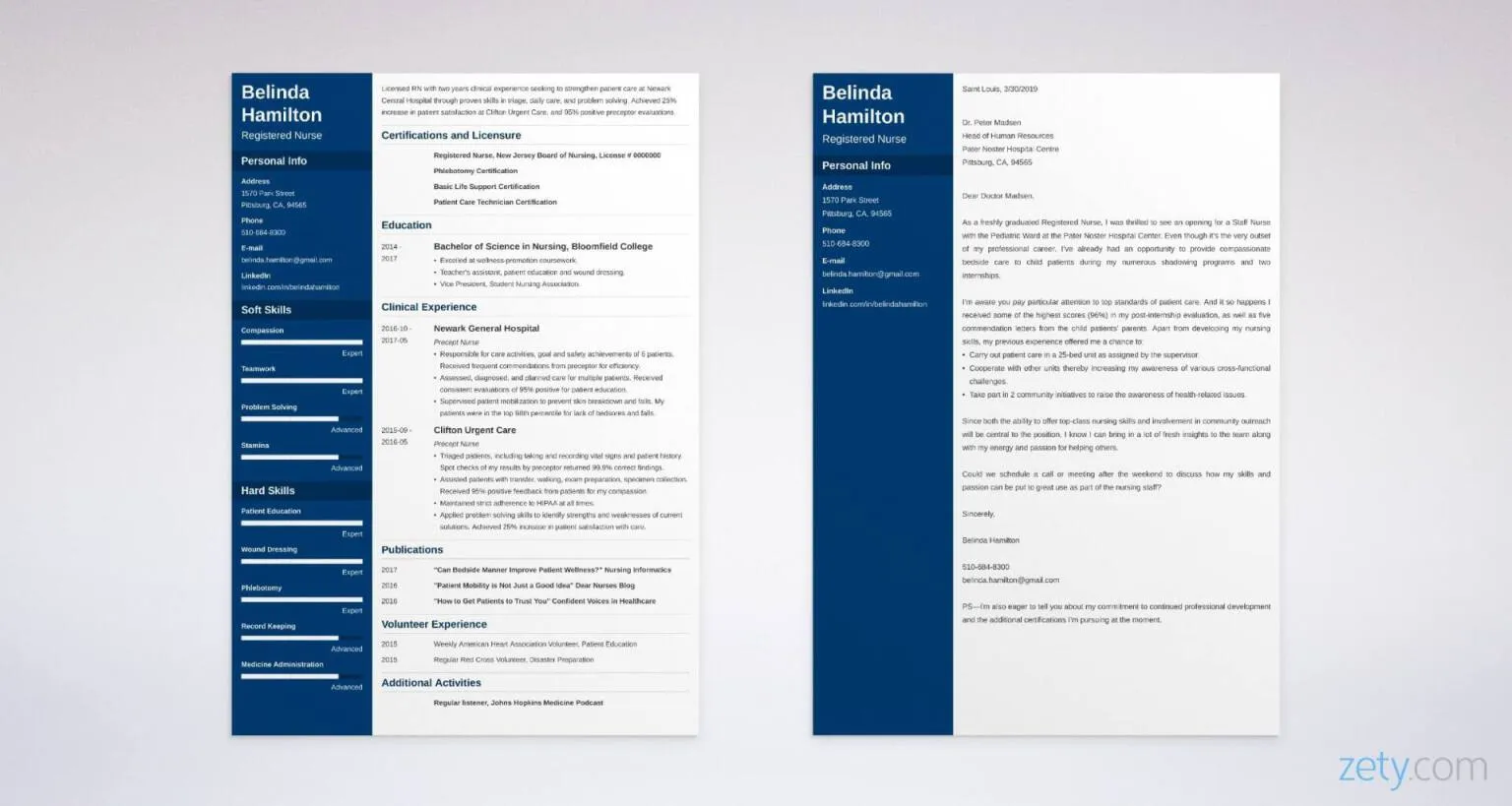
The closing paragraph of your RN cover letter is your final opportunity to make a strong impression. It should express your gratitude for the opportunity and reiterate your interest in the position. Reiterate your key qualifications and your enthusiasm for the role. It is also important to include a clear call to action, asking the employer for an interview. Keep the closing concise and professional, avoiding any unnecessary details. A well-written closing paragraph leaves the employer with a positive impression and increases your chances of moving forward in the hiring process. This is the final push to grab their attention and encourage them to contact you for an interview.
Expressing Gratitude and Next Steps
Expressing your gratitude to the employer is an important part of the closing paragraph. Thank the hiring manager for their time and consideration. This shows that you value the opportunity and respect their time. You can also reiterate your interest in the position by briefly summarizing your key qualifications or emphasizing your excitement about the role. Be sure to tailor your closing to match the tone of your letter. If you have had a conversation with someone in the company, you can mention that you are thankful to the person who has helped you. Make it genuine and sincere. This leaves a positive impression on the employer and shows your professional approach. This helps to show your professionalism and appreciation.
Call to Action
Including a clear call to action is crucial in the closing paragraph. It encourages the employer to take the next step by inviting them to contact you for an interview. Be direct and specific, such as “I am eager to discuss my qualifications further and am available for an interview at your earliest convenience.” Provide your contact information again, or reiterate it as a friendly reminder. You can also include a statement like “I look forward to hearing from you.” Avoid being too assertive or demanding, but make sure your request for an interview is clearly stated. Your call to action shows the employer that you are actively seeking an interview and are confident in your ability to perform the role.
Essential Formatting Tips
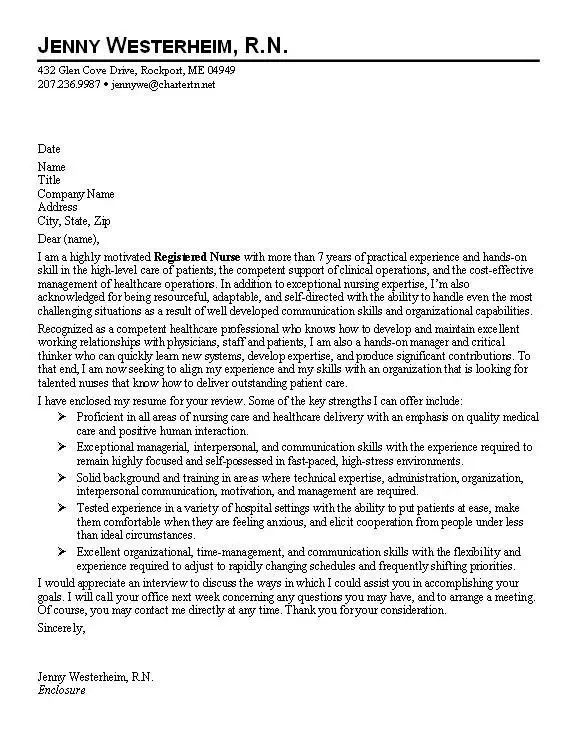
Formatting your RN cover letter correctly is as important as the content itself. Use a professional font such as Times New Roman, Arial, or Calibri, and maintain a consistent font size (11 or 12 points) throughout the document. Use single-line spacing for the body of your letter, with a blank line between paragraphs to ensure readability. Set your margins to 1 inch on all sides for a clean and organized look. Avoid excessive use of bolding, italics, or underlining, which can make your letter look cluttered. Maintain a consistent alignment (usually left-aligned) throughout the text. Use a clear and concise writing style, with short paragraphs and sentences. Keep your letter to one page, as employers often have limited time to review applications. Proper formatting improves readability and demonstrates your attention to detail, leaving a positive impression on the hiring manager.
Font and Spacing Guidelines
Selecting the right font and spacing is crucial for ensuring that your cover letter is easy to read and visually appealing. Choose a professional font that is easy to read and is commonly used, such as Times New Roman, Arial, or Calibri. Keep the font size consistent at 11 or 12 points throughout the document. Use single-line spacing for the main body of your letter, and insert a blank line between paragraphs to improve readability. This creates visual separation and makes the letter easier to scan. Make sure your margins are set to 1 inch on all sides to provide enough white space and give the document a clean, organized appearance. Consistent formatting shows professionalism and enhances the overall visual appeal of your letter.
Proofreading and Editing
Proofreading and editing your cover letter are essential steps that should never be skipped. Carefully review your letter for any spelling errors, grammatical mistakes, and punctuation errors. Ask a trusted friend, colleague, or career advisor to proofread your letter as well, as a fresh pair of eyes can often catch errors you might miss. Check for consistency in formatting, such as font size, spacing, and alignment. Ensure that your sentences are clear, concise, and well-structured. Make sure the tone of your letter is professional and appropriate for the position you are applying for. Errors can create a negative impression and undermine your credibility, so thorough proofreading and editing demonstrate your attention to detail and commitment to quality. Always take the time to review your cover letter to ensure it’s polished and error-free.
RN Cover Letter Sample: Example
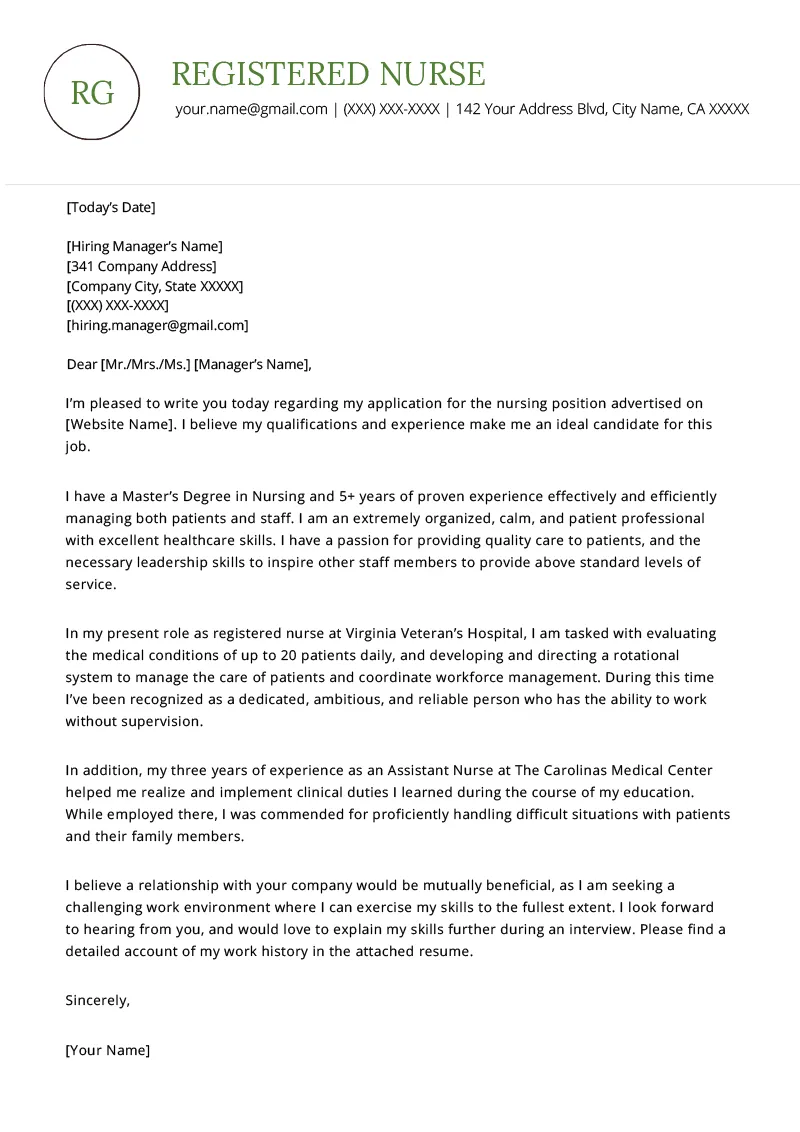
Here is an example of an RN cover letter to guide you in crafting your own: [Your Name] [Your Address] [Your Phone Number] [Your Email Address] [Date] [Hiring Manager Name] [Hiring Manager Title] [Hospital Name] [Hospital Address] Dear [Hiring Manager Name], I am writing to express my enthusiastic interest in the Registered Nurse position at [Hospital Name], as advertised on [Platform where you saw the advertisement]. With over five years of experience in the fast-paced emergency department, I am confident in my ability to provide exceptional patient care. During my time at [Previous Hospital], I consistently delivered timely and accurate care, reducing patient wait times by 10%. I am certified in ACLS and BLS. I am excited about the possibility of joining your team. Thank you for your time and consideration. I look forward to hearing from you soon. Sincerely, [Your Name]
